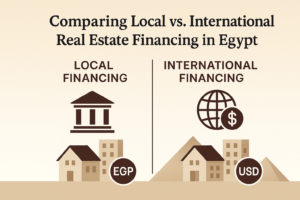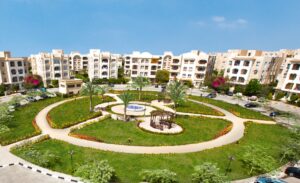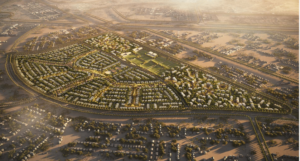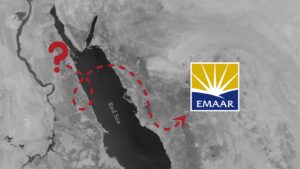Egypt’s New Administrative Capital (NAC) stands as a testament to the nation’s ambition and vision for a contemporary future. Situated approximately 45 kilometers east of Cairo, this expansive urban development aims to alleviate the congestion of the historic capital while propelling Egypt into a new era of urbanization
Strategic Vision Behind the New Capital
The inception of the NAC is deeply rooted in Egypt’s strategic objectives. Cairo’s burgeoning population, which surpassed 20 million by the mid-2010s, led to escalating challenges in infrastructure, housing, and services. The NAC is envisioned to redistribute the population, reduce urban pressure on Cairo, and create a hub for government, finance, and culture.
Masterplan and Urban Design
The NAC’s masterplan is meticulously crafted to embody modern urban planning principles:
Governmental District: Centralized zones housing the presidential palace, parliament, and numerous ministries, streamlining administrative functions.
Diplomatic Quarter: Allocated spaces for foreign embassies, fostering international relations.
Business and Financial Hub: A central business district featuring state-of-the-art skyscrapers, including the Iconic Tower, poised to be Africa’s tallest structure at approximately 385 meters.
Cultural and Recreational Spaces: The city boasts the Egypt Grand Mosque and the Cathedral of the Nativity of Christ, among the largest religious edifices in Africa and the Middle East. Additionally, the Green River Park, a vast urban oasis, weaves through the city, offering residents and visitors expansive green spaces.
Infrastructure and Connectivity
Ensuring seamless connectivity, the NAC is integrated with advanced transportation networks:
Cairo Monorail: A rapid transit system linking the NAC to Greater Cairo, enhancing commuter convenience.
Capital International Airport: A newly established airport catering to both domestic and international flights, bolstering the city’s accessibility.
Smart City Features: Embracing sustainability and technology, the NAC is designed as a smart city with integrated infrastructure and energy management systems.
Phased Development and Population Capacity
The development of the NAC is structured in phases:
Phase One: Covers approximately 168 square kilometers, focusing on establishing governmental buildings, residential areas, and essential infrastructure.
Future Phases: Plans include expanding the city to accommodate a population of around 6.5 million, with provisions for future growth.
Economic Implications and Investments
The NAC represents a significant economic endeavor:
Estimated Costs: The project’s initial phase is projected at over $50 billion, reflecting Egypt’s commitment to modernizing its urban landscape.
Foreign Investments: The city has attracted international interest, exemplified by plans for the Forbes International Tower, a $1 billion, 50-story skyscraper powered by clean hydrogen, set to commence construction in early 2025.
Current Progress and Future Outlook
As of early 2024, the NAC has witnessed tangible advancements:
Government Relocation: Several ministries and government entities have transitioned to the new capital, marking a significant shift in administrative operations.
Residential Settlements: The city has begun welcoming its first residents, with infrastructure and amenities progressively coming online.
Challenges and Criticisms
Despite its ambitious scope, the NAC faces several challenges:
Economic Strain: The substantial financial outlay has raised concerns about increasing national debt and resource allocation.
Social Disparities: Critics argue that the NAC may exacerbate socio-economic divides, catering primarily to affluent segments while neglecting broader societal needs.
Environmental Considerations: The sustainability of diverting resources, particularly water, to support a massive urban development in a desert region poses ecological questions.
Conclusion
Egypt’s New Administrative Capital embodies a bold vision for the nation’s future, aiming to redefine urban living and governance. While it presents opportunities for economic growth and modernization, addressing the accompanying challenges will be crucial to ensure inclusive and sustainable development.
FAQs
- What is the purpose of Egypt’s New Administrative Capital?
- The NAC aims to alleviate congestion in Cairo, modernize administrative functions, and create a sustainable urban environment.
- Where is the New Administrative Capital located?
- It is situated approximately 45 kilometers east of Cairo, between the Nile River and the Suez Canal.
- What are the key features of the NAC?
- The city includes governmental districts, a central business district with skyscrapers like the Iconic Tower, cultural landmarks, and extensive green spaces.
- How does the NAC integrate sustainability?
- The NAC is designed as a smart city with sustainable infrastructure, energy management systems, and green spaces like the Green River Park.
- What challenges does the NAC face?
- Challenges include economic costs, potential social disparities, and environmental sustainability concerns.
Unlock premium real estate opportunities in Egypt’s New Administrative Capital with Consult
Get expert insights on market trends, property acquisition, and ROI optimization. Contact us today for a tailored investment strategy

















